

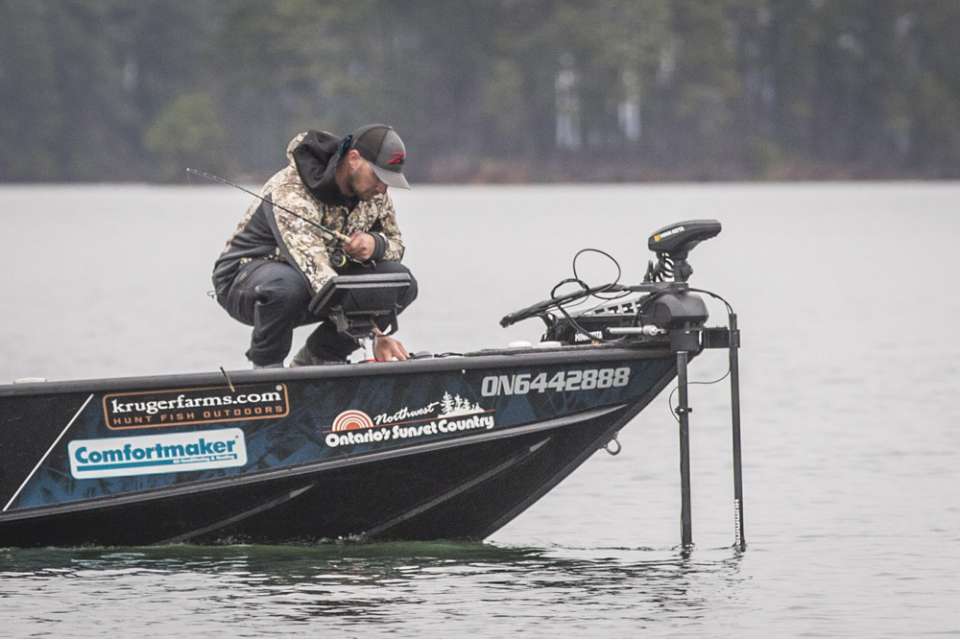
Summarizing the parallels between spots and smallies, Gustafson points to his deep water electronics proficiency â a skill set that serves him well, no matter what heâs hunting.

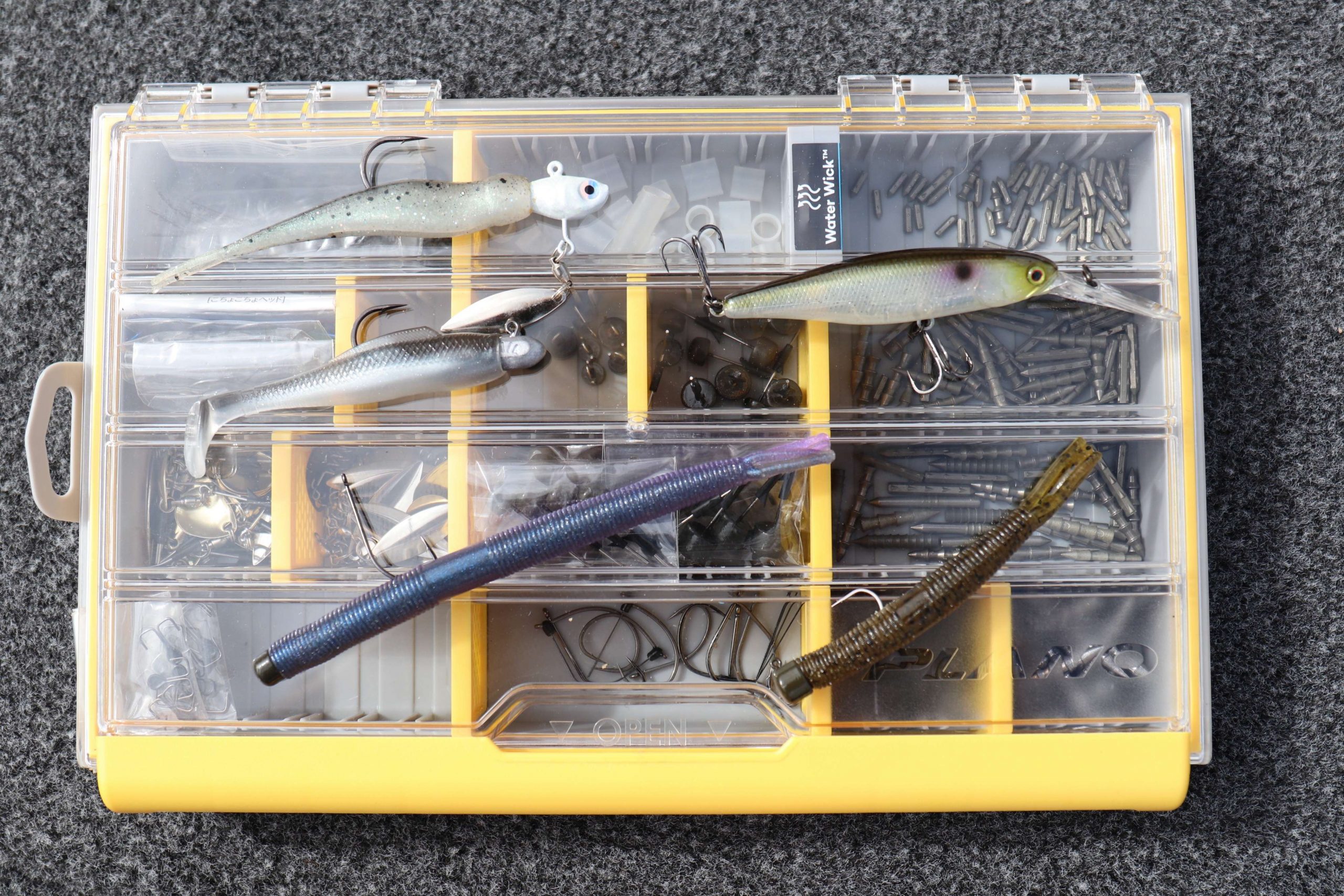
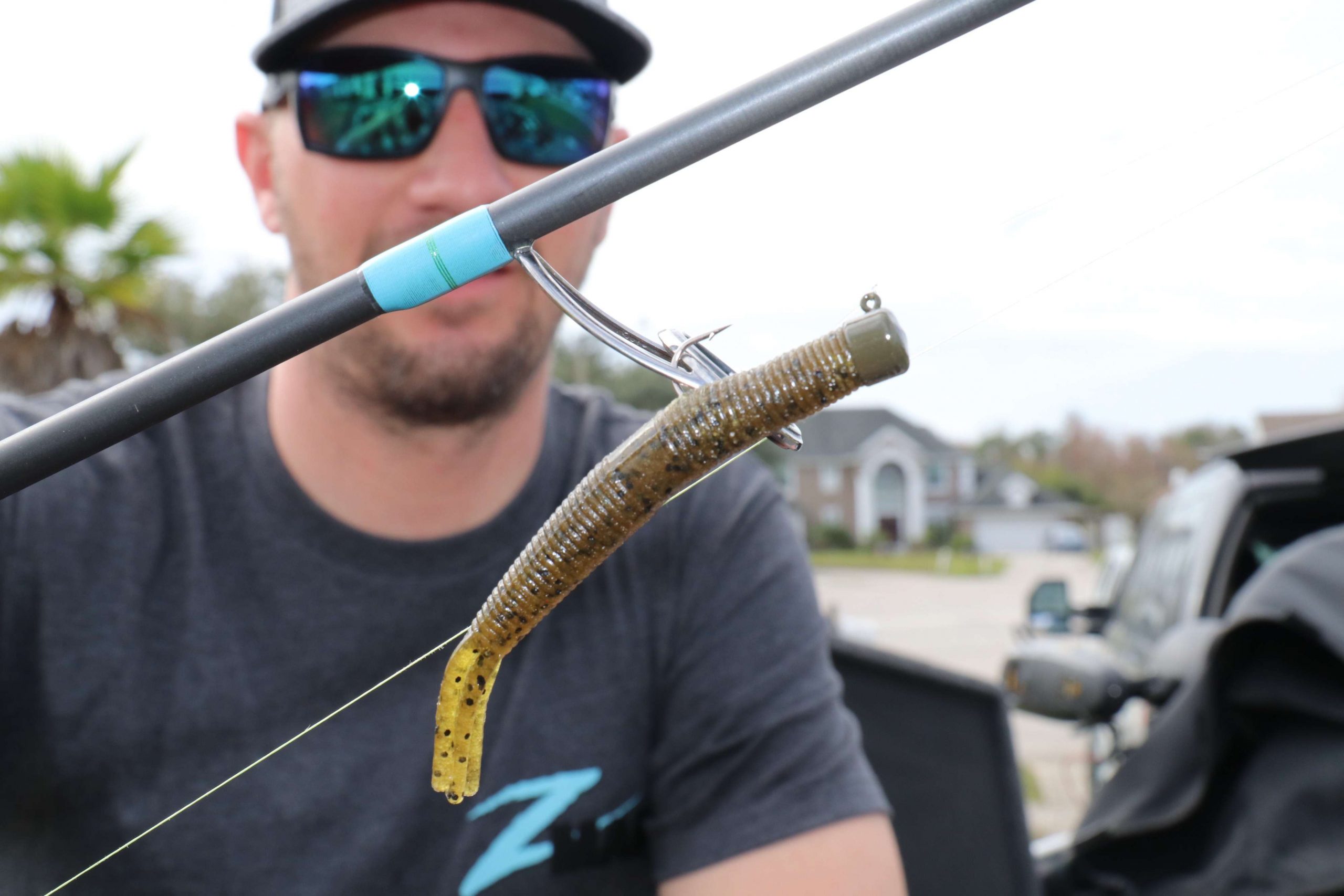
âThis is the most universal spotted bass bait there is; you can catch them from 4 feet to 60 feet,â Gustafson said. âI like the 1/6-ounce jig head because it gets to the bottom quickly.â
Noting that efficiency is key, especially in the deeper spots, Gustafson uses 8-pound bright yellow Power Pro braided main line, topped with an 8-pound fluorocarbon leader. The latter prevents spooking the sharp-eyed spots, but the braid provides an invaluable benefit.
âThat bright color allows you to see your line better,â Gustafson said. âYou can see a bite on the fall and you can see when you bait hits the bottom. That helps prevent snags and allows you to start fishing sooner. If you use a darker color, youâll get a headache trying to watch your line.â
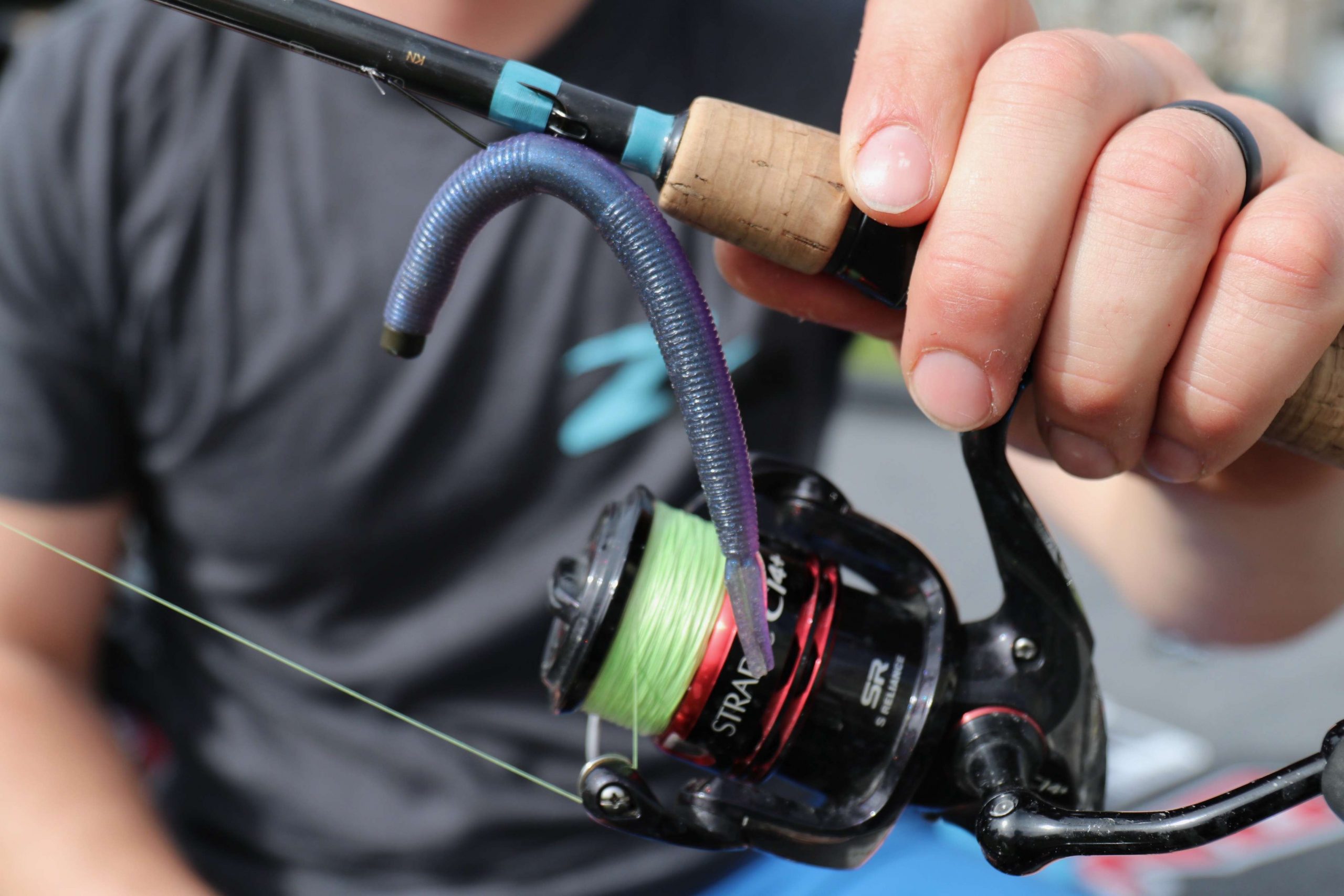
âIâll have it set up with a 1/6-ounce weight for dropping on fish that I see on my graph and then Iâll put a 1/10-ounce weight in it for skipping it around deep floating docks,â he said.
Gustafson offers two tips for Neko success: 1) When dropping to spots, donât stop the bait above the fish, as you would with smallmouth. Let it zip past them and prompt the most aggressive fish to chase. 2) If you can see spotted bass suspending under docks, stay as far back as possible to avoid spooking them.
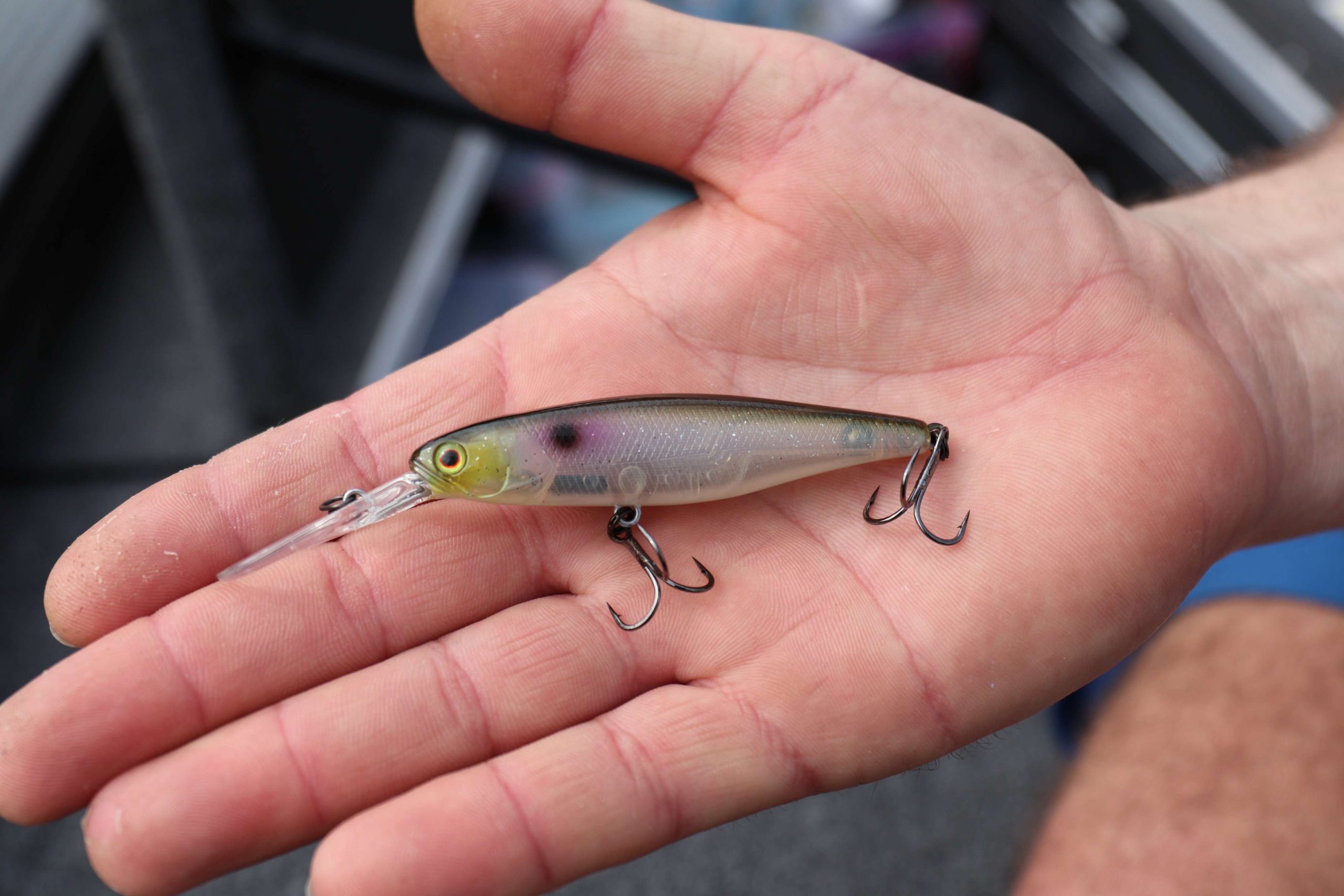
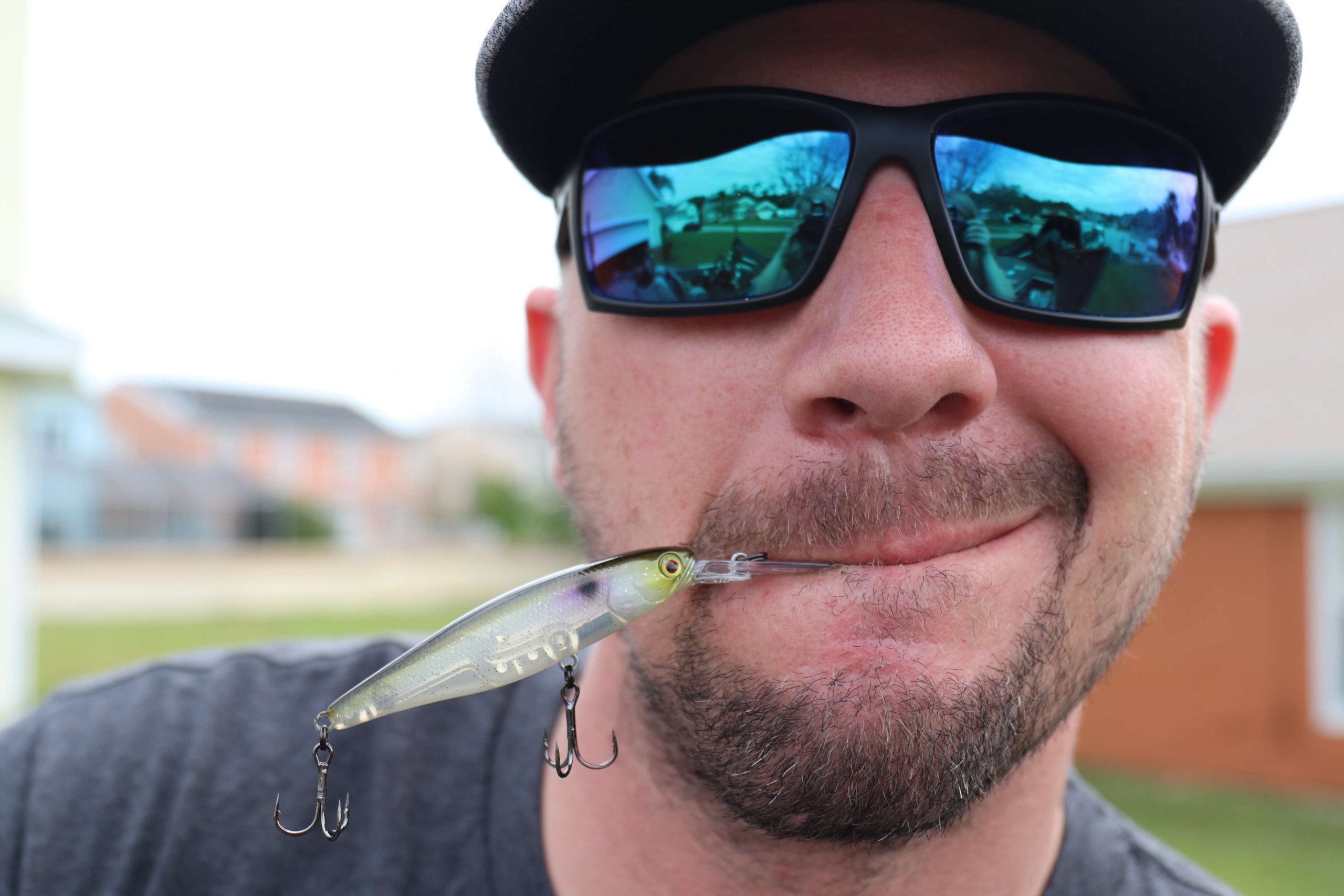
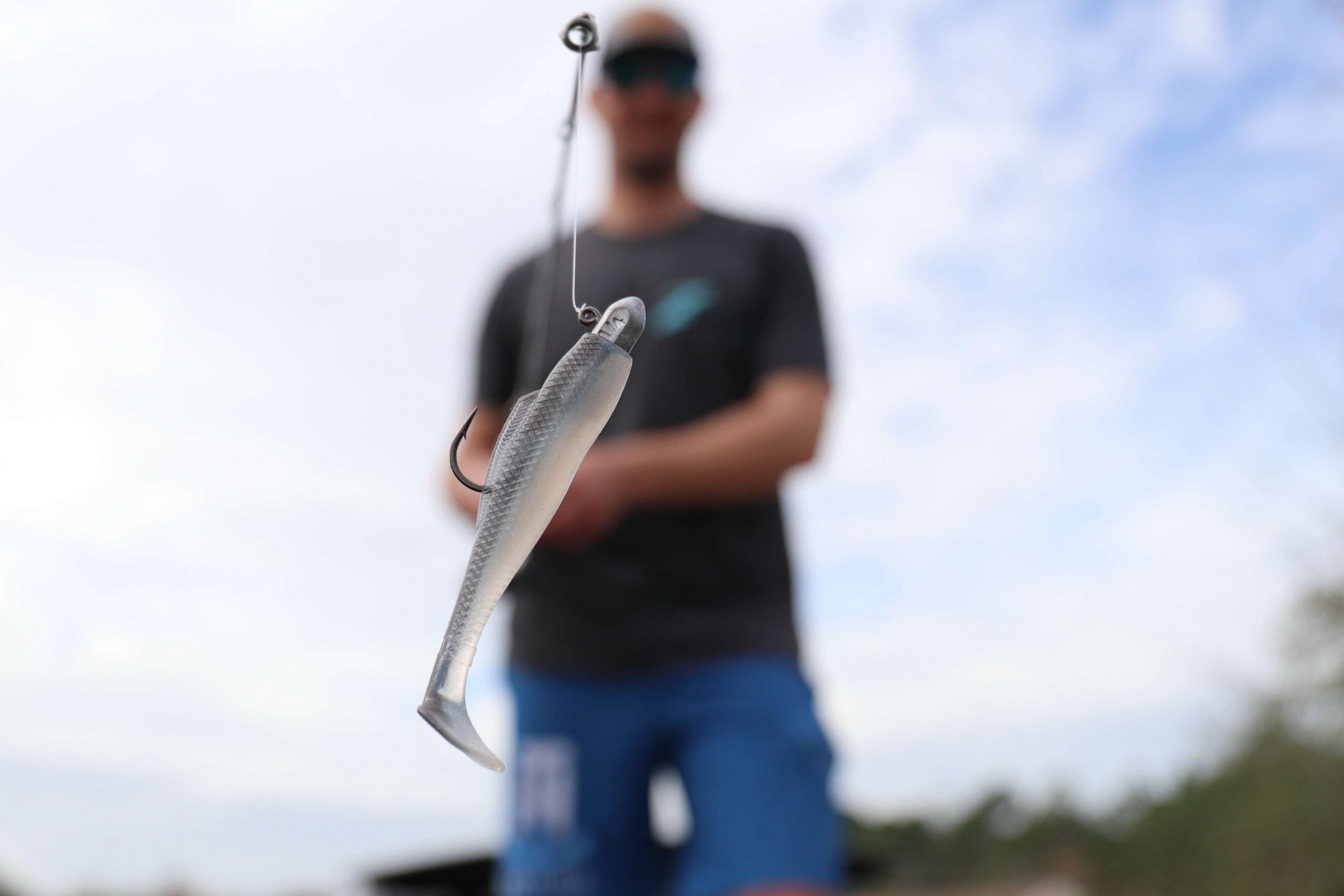
âWhile Iâm casting the swimbait, Iâm always watching my graph for fish that I can drop on with a Ned rig, as well,â Gustafson said.
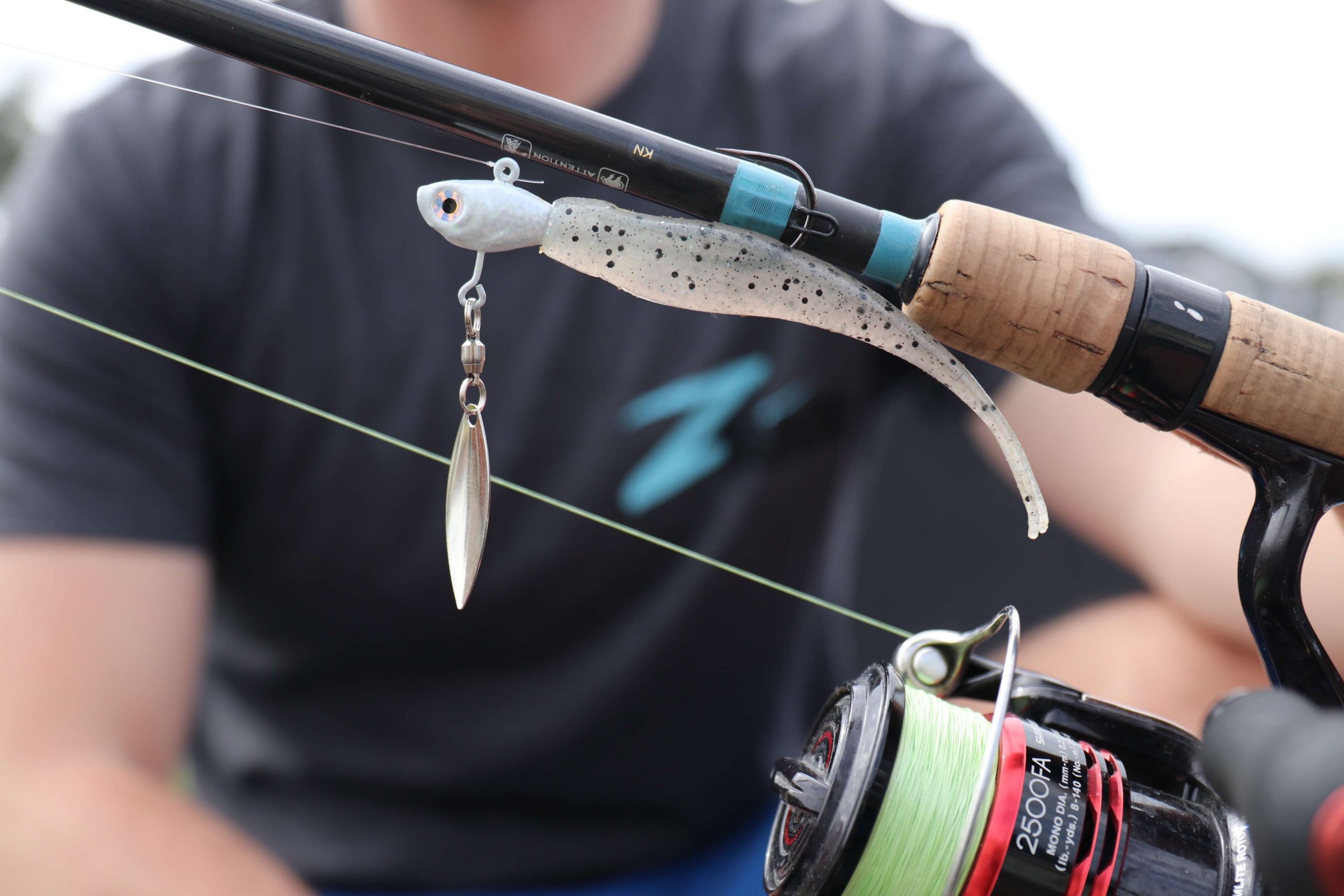
âItâs just a slow and steady retrieve and finding that right section in the water column,â Gustafson said. âA lot of that is watching your graph throughout the day and if youâre seeing a lot of fish 12 feet down, make note of where youâre seeing them and keep your bait in that range.â
With this selection of spotted bass baits on his deck, Gustafsonâs ready to engage the fish heâs come to appreciate through his U.S. competition: âI just love the aggressive nature of spotted bass and itâs something Iâve put quite a bit of time into. I feel pretty confident chasing them around.â




